
SimAI
None
Stars: 281
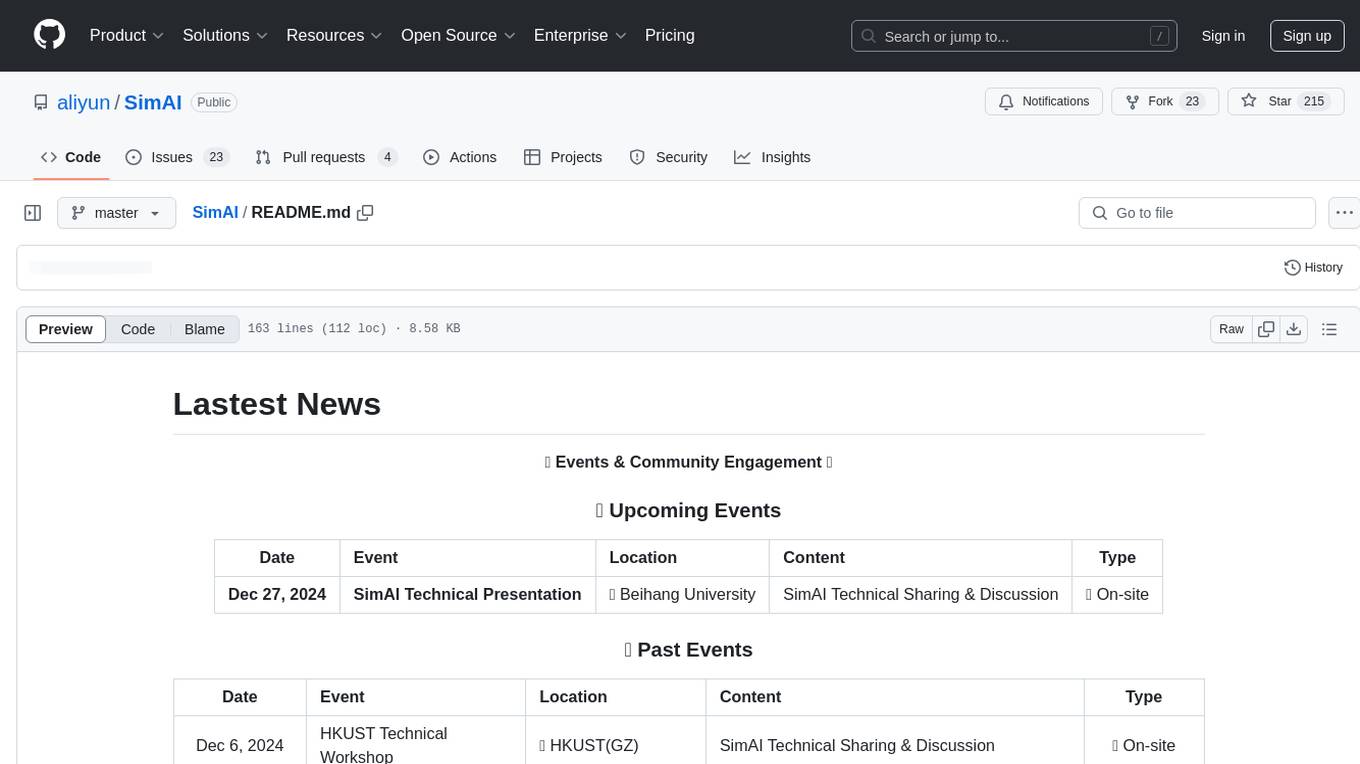
SimAI is the industry's first full-stack, high-precision simulator for AI large-scale training. It provides detailed modeling and simulation of the entire LLM training process, encompassing framework, collective communication, network layers, and more. This comprehensive approach offers end-to-end performance data, enabling researchers to analyze training process details, evaluate time consumption of AI tasks under specific conditions, and assess performance gains from various algorithmic optimizations.
README:
| Date | Event | Location | Content | Type |
|---|---|---|---|---|
| Dec 27, 2024 | SimAI Technical Presentation | 📍 Beihang University | SimAI Technical Sharing & Discussion | 🎓 On-site |
| Date | Event | Location | Content | Type |
|---|---|---|---|---|
| Dec 6, 2024 | HKUST Technical Workshop | 📍 HKUST(GZ) | SimAI Technical Sharing & Discussion | 🎓 On-site |
| Dec 5, 2024 | Bench'24 Conference | 📍 Guangzhou | SimAI Tutorial & Deep-dive Session | 🎓 On-site |
| Nov 26, 2024 | SimAI Community Live Stream | 🌐 Online | Interactive Technical Discussion & Demo (400+ Attendees) | 💻 Virtual |
| Nov 15, 2024 | Technical Workshop | 📍 Thousand Island Lake | SimAI Offline Technical Exchange | 🎯 On-site |
| Oct 18, 2024 | Guest Lecture | 📍 Fudan University | SimAI Tutorial & Public Course | 🎓 On-site |
| Sept 24-26, 2024 | CCF HPC China 2024 | 📍 Wuhan | SimAI Introduction & Technical Presentation | 🎤 Conference |
SimAI is the industry's first full-stack, high-precision Simulator for AI large-scale training. It provides detailed modeling and simulation of the entire LLM training process, encompassing framework, collective communication, network layers, and more. This comprehensive approach offers end-to-end performance data, enabling researchers to:
- Analyze training process details
- Evaluate the time consumption of AI tasks under specific conditions
- Evaluate E2E performance gains from various algorithmic optimizations including:
- Framework parameters settings
- Collective communication algorithms
- NCCL environment variables
- Network transmission protocols
- Congestion control algorithms
- Adaptive routing algorithms
- Scale-up/out network topology modifications
- ...
|--- AICB SimAI --|--- SimCCL |--- astra-sim-alibabacloud |--- ns-3-alibabacloud
Building on pure simulation capabilities, SimAI has evolved into a versatile full-stack toolkit comprising four components (aicb, SimCCL, astra-sim-alibabacloud, ns-3-alibabacloud). These components can be combined in various ways to achieve different functionalities. Below, we present the six main usage scenarios for SimAI. We encourage users to explore even more possibilities with this powerful tool.
Below is the architecture diagram of the SimAI Simulator:

astra-sim-alibabacloud is extended from astra-sim. We are grateful to the astra-sim team for their excellent work and open-source contribution. We have integrated NCCL algorithms and added some new features.
SimAI supports three major operation modes to meet different simulation requirements:
SimAI-Analytical offers fast simulation by abstracting network communication details using bus bandwidth (busbw) to estimate collective communication time. While it currently supports user-defined busbw, automatic busbw calculation feature is coming soon.
SimAI-Simulation provides full-stack simulation with fine-grained network communication modeling. It leverages NS3 or other network simulators (NS3 currently open-sourced) to achieve detailed simulation of all communication behaviors, aiming for high-fidelity reproduction of actual training environments.
SimAI-Physical (Beta) enables physical traffic generation for CPU RDMA cluster environments. This mode generates NCCL-like traffic patterns, allowing in-depth study of NIC behaviors during LLM training. It is currently in internal testing phase.
| Scenario | Description | Component Combination |
|---|---|---|
| 1. AICB Test Suite | Run communication patterns on GPU clusters using AICB Test suite | AICB |
| 2. AICB/AIOB Workload | Model compute/communication patterns of training process to generate workload | AICB |
| 3. Collective Comm Analyze | Break down collective communication operations into point-to-point communication sets | SimCCL |
| 4. Collective Comm w/o GPU | Perform RDMA collective communication traffic on non-GPU clusters | AICB + SimCCL + astra-sim-alibabacloud(physical) |
| 5. SimAI-Analytical | Conduct rapid AICB workload analysis and simulation on any server (ignoring underlying network details) | AICB + astra-sim-alibabacloud(analytical) |
| 6. SimAI-Simulation | Perform full simulation on any server | AICB + SimCCL + astra-sim-alibabacloud(simulation) + ns-3-alibabacloud |
SimAI work has been accepted by NSDI'25 Spring, for more details, please refer to our paper below:
SimAI: Unifying Architecture Design and Performance Tunning for Large-Scale Large Language Model Training with Scalability and Precision.
We encourage innovative research and extensions based on SimAI. Welcome to join our community group or reach out via email for discussion. We may provide technical support.
Here are some simple examples, SimAI full tutorials can be found here: SimAI@Tutorial, aicb@Tutorial, [SimCCL@Tutorial], [ns-3-alibabacloud@Tutorial]
You can follow the instrucitons below to quickly set up the environtments and run SimAI
The following code has been successfully tested on GCC/G++ 9.4.0, python 3.8.10 in Ubuntu 20.04
You can use the official Ubuntu 20.04 image, and do not install ninja.
(For generation workloads, it's recommended to leverage NGC container images directly.)
# Clone the repository
$ git clone https://github.com/aliyun/SimAI.git
$ cd ./SimAI/
# Clone submodules
$ git submodule update --init --recursive
# Make sure use the newest commit
$ git submodule update --remote
# Compile SimAI-Analytical
$ ./scripts/build.sh -c analytical
# Compile SimAI-Simulation (ns3)
$ ./scripts/build.sh -c ns3
$ ./bin/SimAI_analytical -w example/workload_analytical.txt -g 9216 -g_p_s 8 -r test- -busbw example/busbw.yaml# Create network topo
$ python3 ./astra-sim-alibabacloud/inputs/topo/gen_HPN_7.0_topo_mulgpus_one_link.py -g 128 -gt A100 -bw 100Gbps -nvbw 2400Gbps
# Running
$ AS_SEND_LAT=3 AS_NVLS_ENABLE=1 ./bin/SimAI_simulator -t 16 -w ./example/microAllReduce.txt -n ./HPN_7_0_128_gpus_8_in_one_server_with_single_plane_100Gbps_A100 -c astra-sim-alibabacloud/inputs/config/SimAI.conf
Please email Gang Lu ([email protected]) or Qingxu Li ([email protected]) if you have any questions.
Welcome to join the SimAI community chat groups, with the DingTalk group on the left and the WeChat group on the right.
For Tasks:
Click tags to check more tools for each tasksFor Jobs:
Alternative AI tools for SimAI
Similar Open Source Tools

SimAI
SimAI is the industry's first full-stack, high-precision simulator for AI large-scale training. It provides detailed modeling and simulation of the entire LLM training process, encompassing framework, collective communication, network layers, and more. This comprehensive approach offers end-to-end performance data, enabling researchers to analyze training process details, evaluate time consumption of AI tasks under specific conditions, and assess performance gains from various algorithmic optimizations.
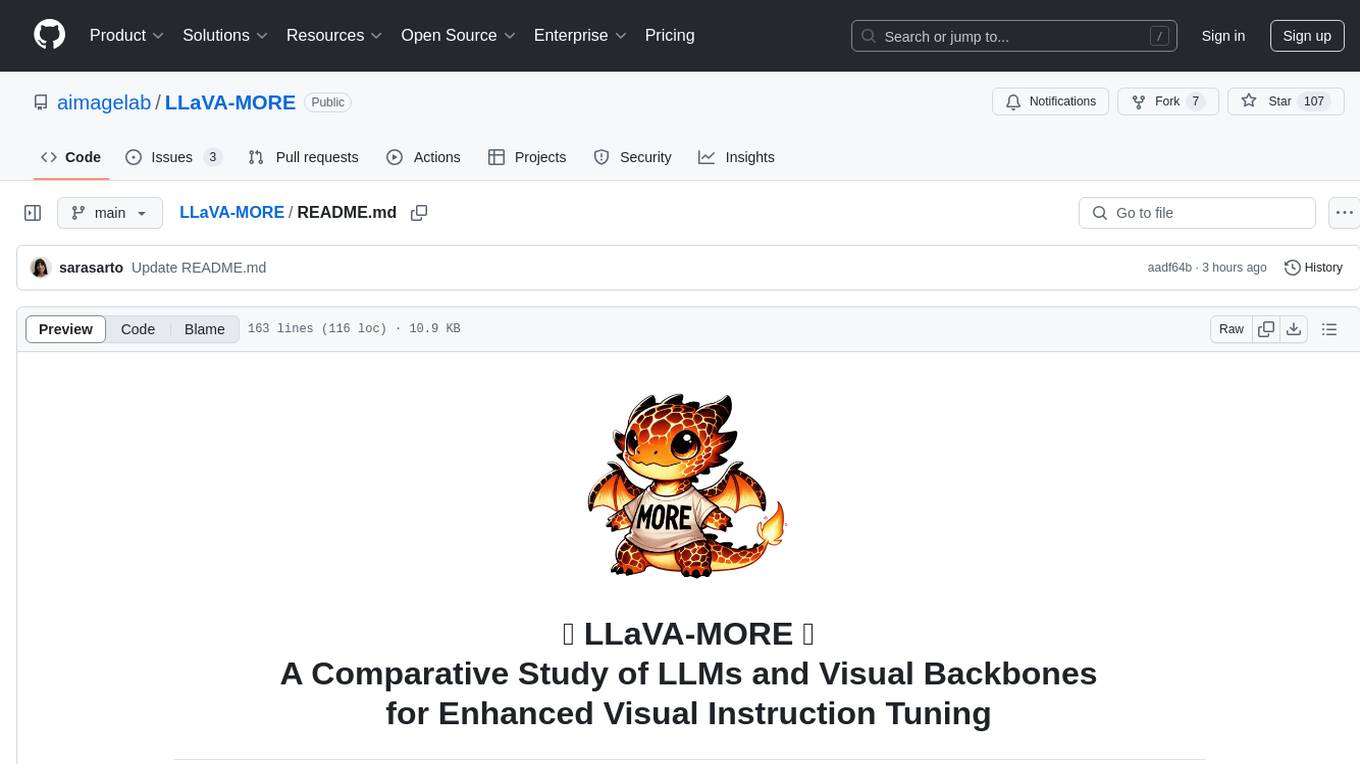
LLaVA-MORE
LLaVA-MORE is a new family of Multimodal Language Models (MLLMs) that integrates recent language models with diverse visual backbones. The repository provides a unified training protocol for fair comparisons across all architectures and releases training code and scripts for distributed training. It aims to enhance Multimodal LLM performance and offers various models for different tasks. Users can explore different visual backbones like SigLIP and methods for managing image resolutions (S2) to improve the connection between images and language. The repository is a starting point for expanding the study of Multimodal LLMs and enhancing new features in the field.
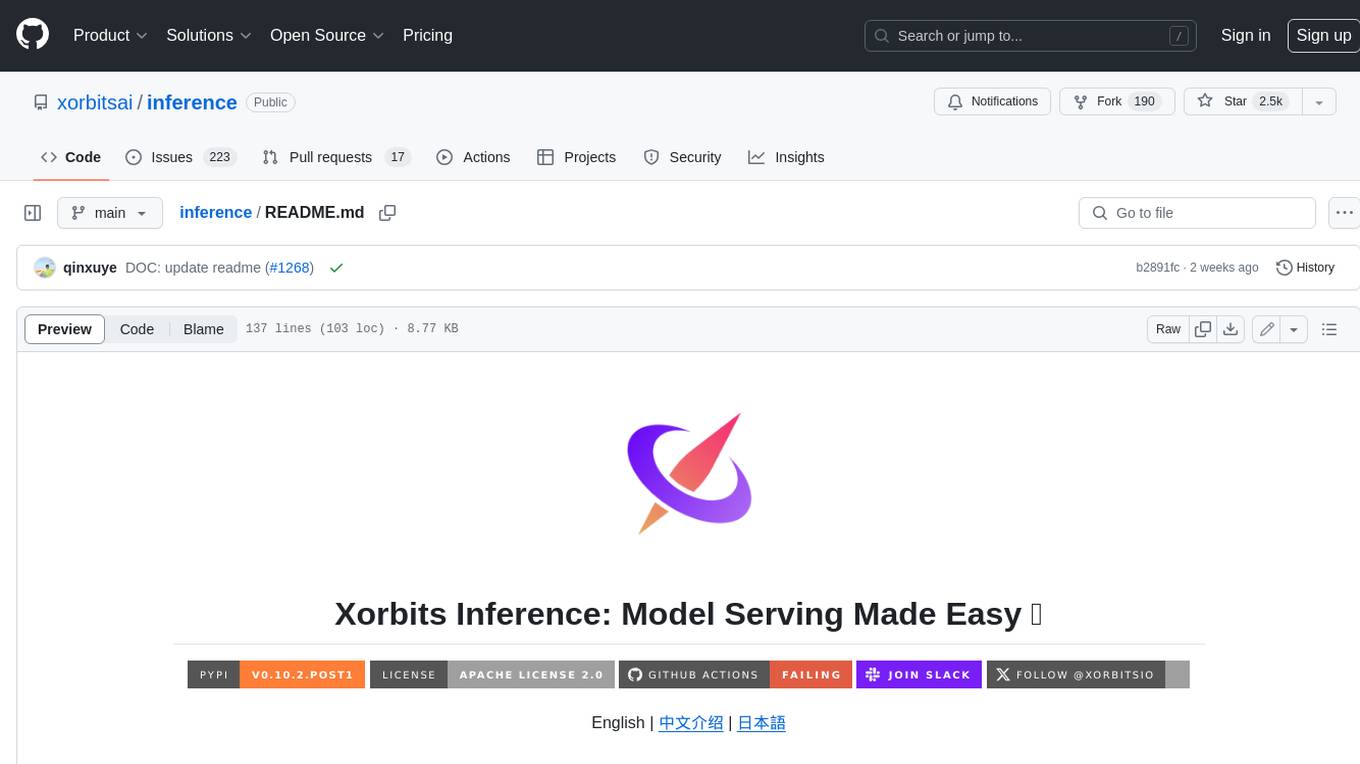
inference
Xorbits Inference (Xinference) is a powerful and versatile library designed to serve language, speech recognition, and multimodal models. With Xorbits Inference, you can effortlessly deploy and serve your or state-of-the-art built-in models using just a single command. Whether you are a researcher, developer, or data scientist, Xorbits Inference empowers you to unleash the full potential of cutting-edge AI models.
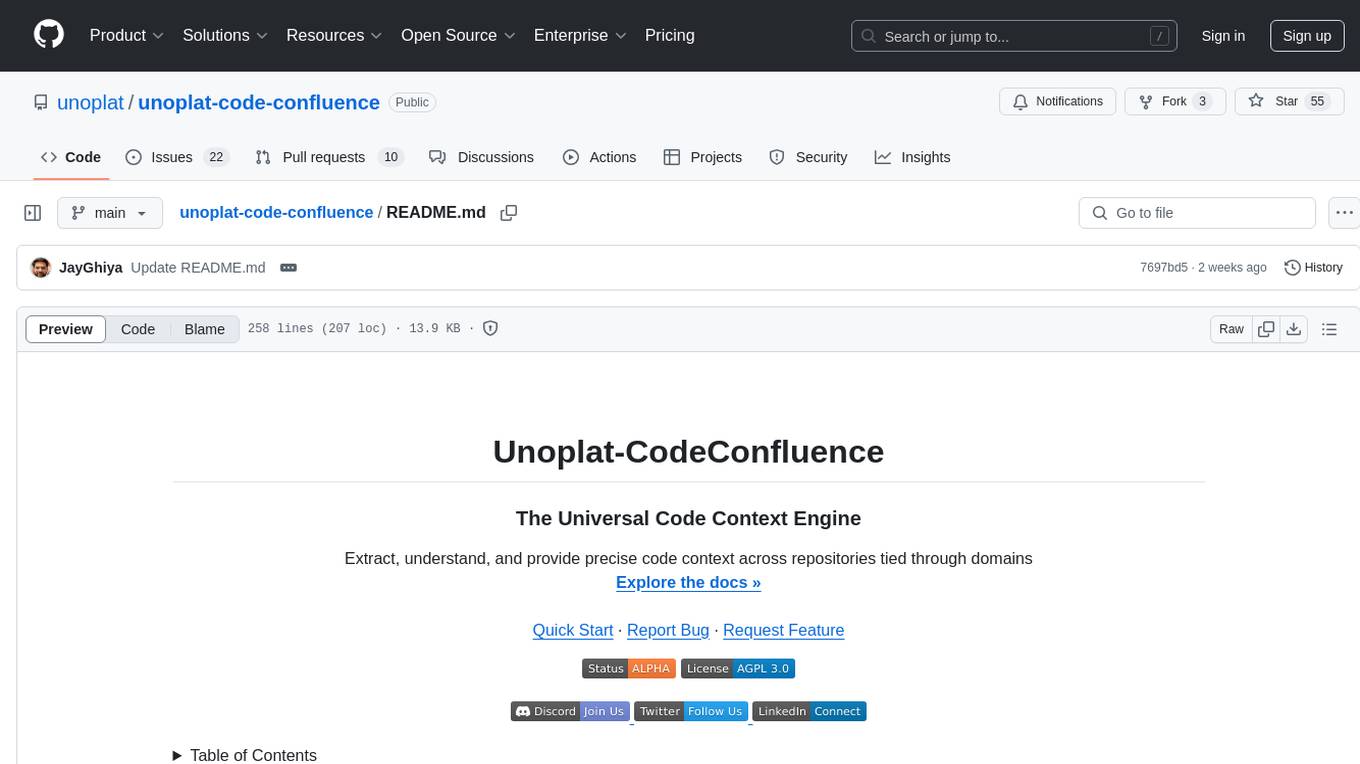
unoplat-code-confluence
Unoplat-CodeConfluence is a universal code context engine that aims to extract, understand, and provide precise code context across repositories tied through domains. It combines deterministic code grammar with state-of-the-art LLM pipelines to achieve human-like understanding of codebases in minutes. The tool offers smart summarization, graph-based embedding, enhanced onboarding, graph-based intelligence, deep dependency insights, and seamless integration with existing development tools and workflows. It provides a precise context API for knowledge engine and AI coding assistants, enabling reliable code understanding through bottom-up code summarization, graph-based querying, and deep package and dependency analysis.
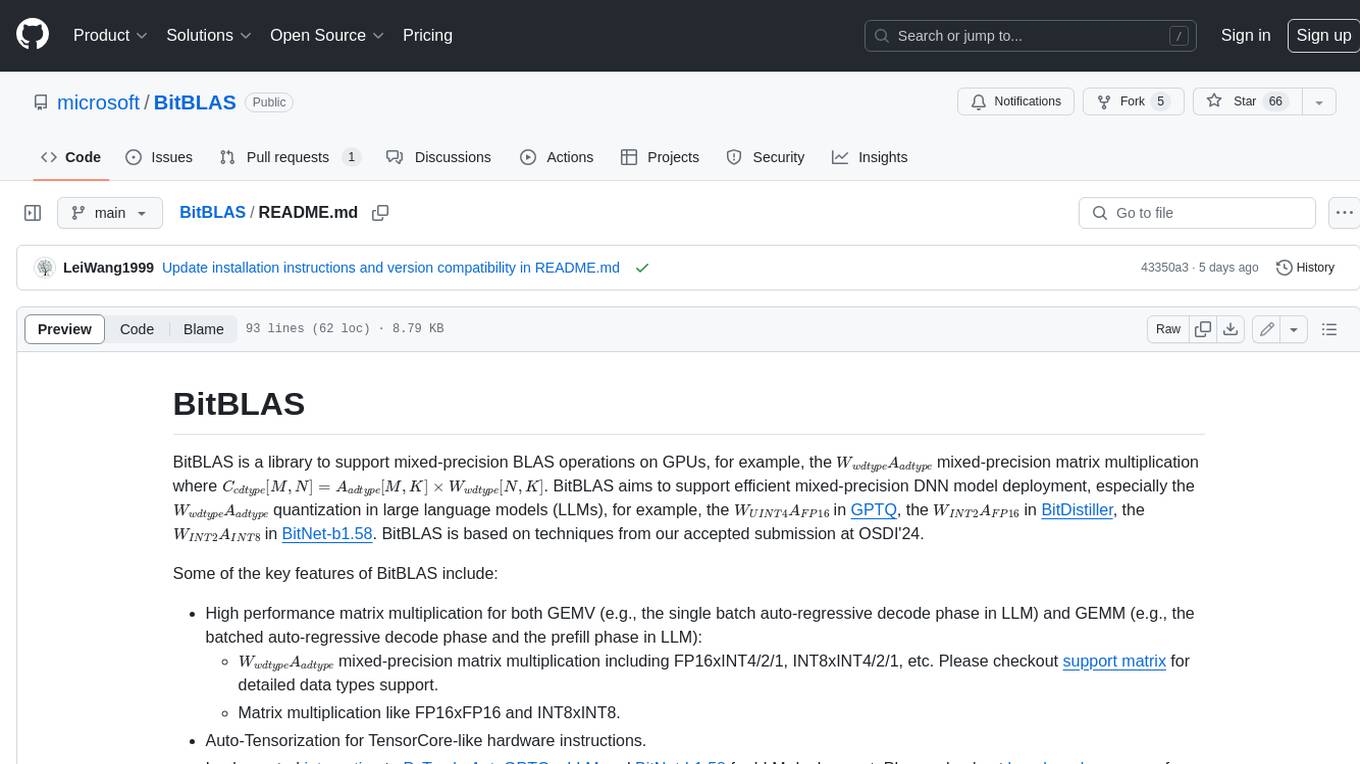
BitBLAS
BitBLAS is a library for mixed-precision BLAS operations on GPUs, for example, the $W_{wdtype}A_{adtype}$ mixed-precision matrix multiplication where $C_{cdtype}[M, N] = A_{adtype}[M, K] \times W_{wdtype}[N, K]$. BitBLAS aims to support efficient mixed-precision DNN model deployment, especially the $W_{wdtype}A_{adtype}$ quantization in large language models (LLMs), for example, the $W_{UINT4}A_{FP16}$ in GPTQ, the $W_{INT2}A_{FP16}$ in BitDistiller, the $W_{INT2}A_{INT8}$ in BitNet-b1.58. BitBLAS is based on techniques from our accepted submission at OSDI'24.
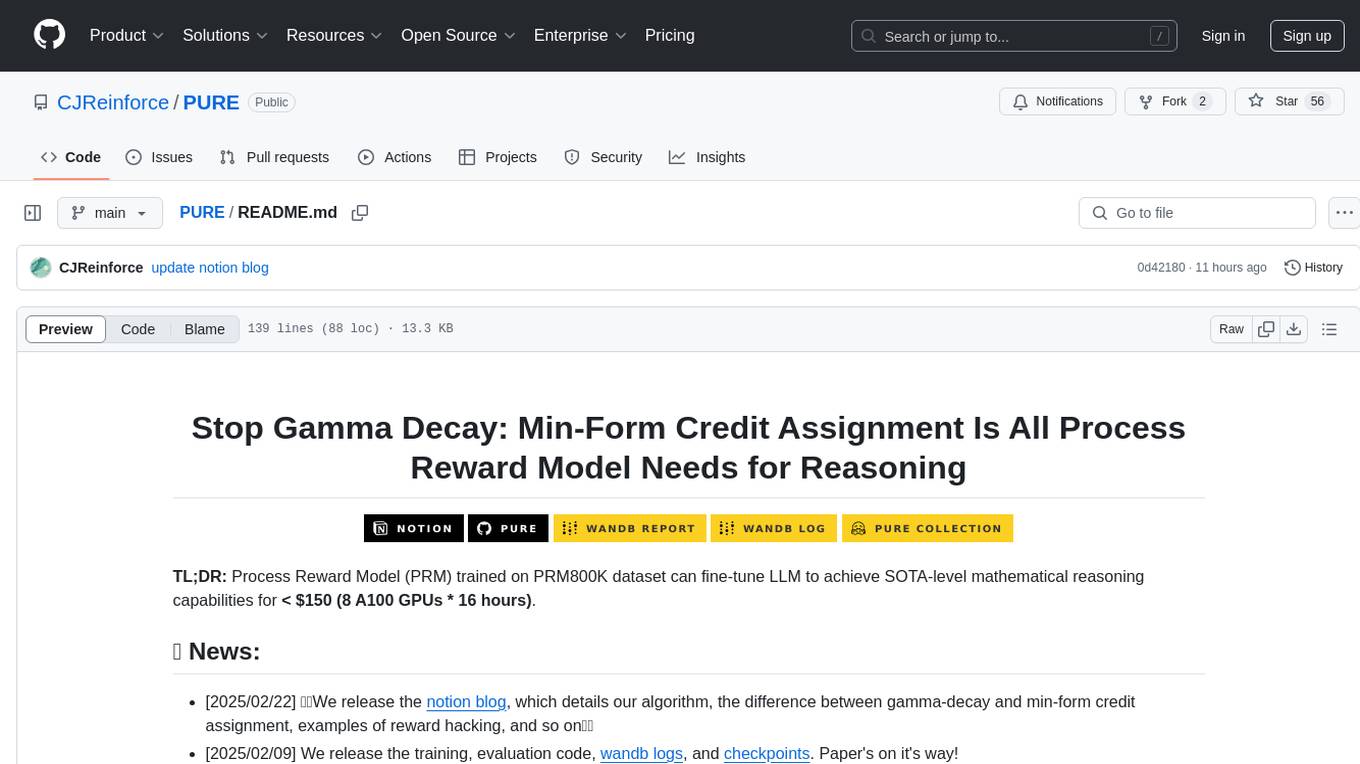
PURE
PURE (Process-sUpervised Reinforcement lEarning) is a framework that trains a Process Reward Model (PRM) on a dataset and fine-tunes a language model to achieve state-of-the-art mathematical reasoning capabilities. It uses a novel credit assignment method to calculate return and supports multiple reward types. The final model outperforms existing methods with minimal RL data or compute resources, achieving high accuracy on various benchmarks. The tool addresses reward hacking issues and aims to enhance long-range decision-making and reasoning tasks using large language models.
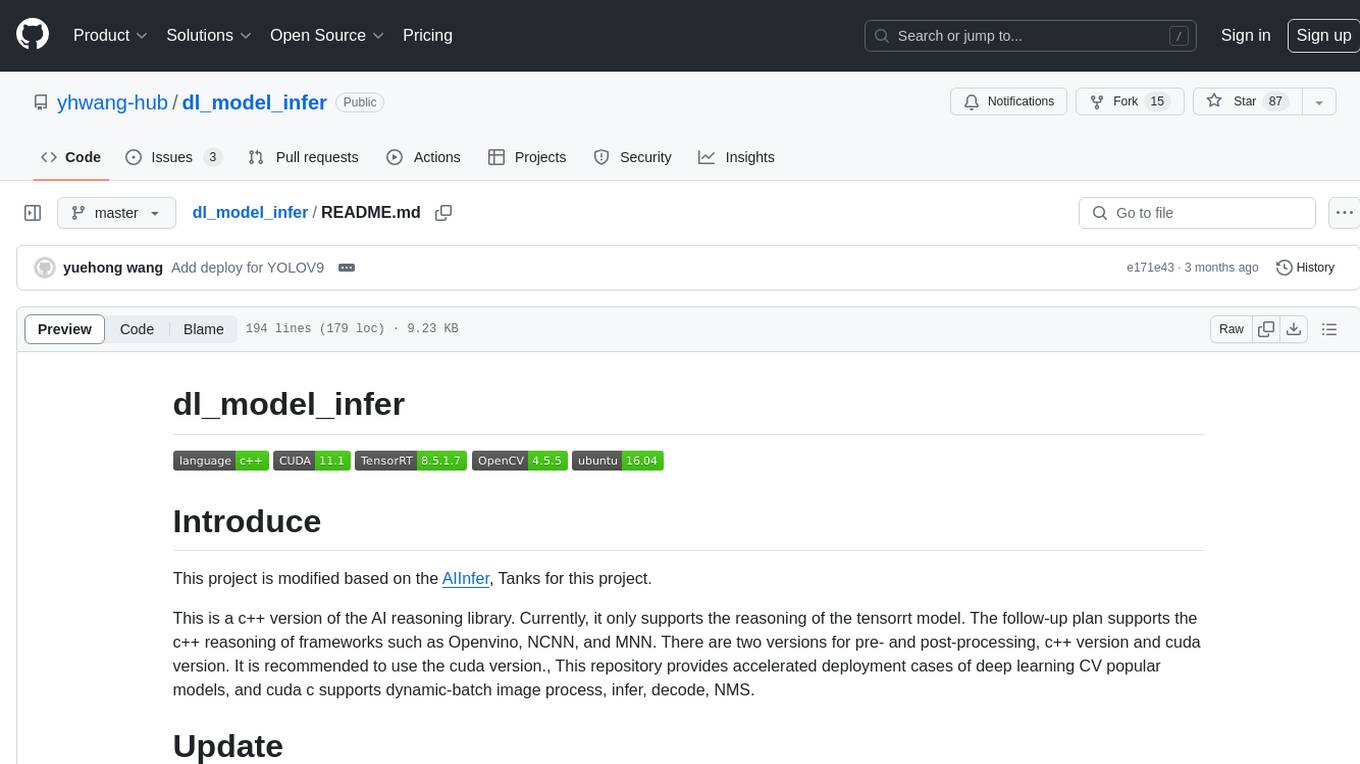
dl_model_infer
This project is a c++ version of the AI reasoning library that supports the reasoning of tensorrt models. It provides accelerated deployment cases of deep learning CV popular models and supports dynamic-batch image processing, inference, decode, and NMS. The project has been updated with various models and provides tutorials for model exports. It also includes a producer-consumer inference model for specific tasks. The project directory includes implementations for model inference applications, backend reasoning classes, post-processing, pre-processing, and target detection and tracking. Speed tests have been conducted on various models, and onnx downloads are available for different models.
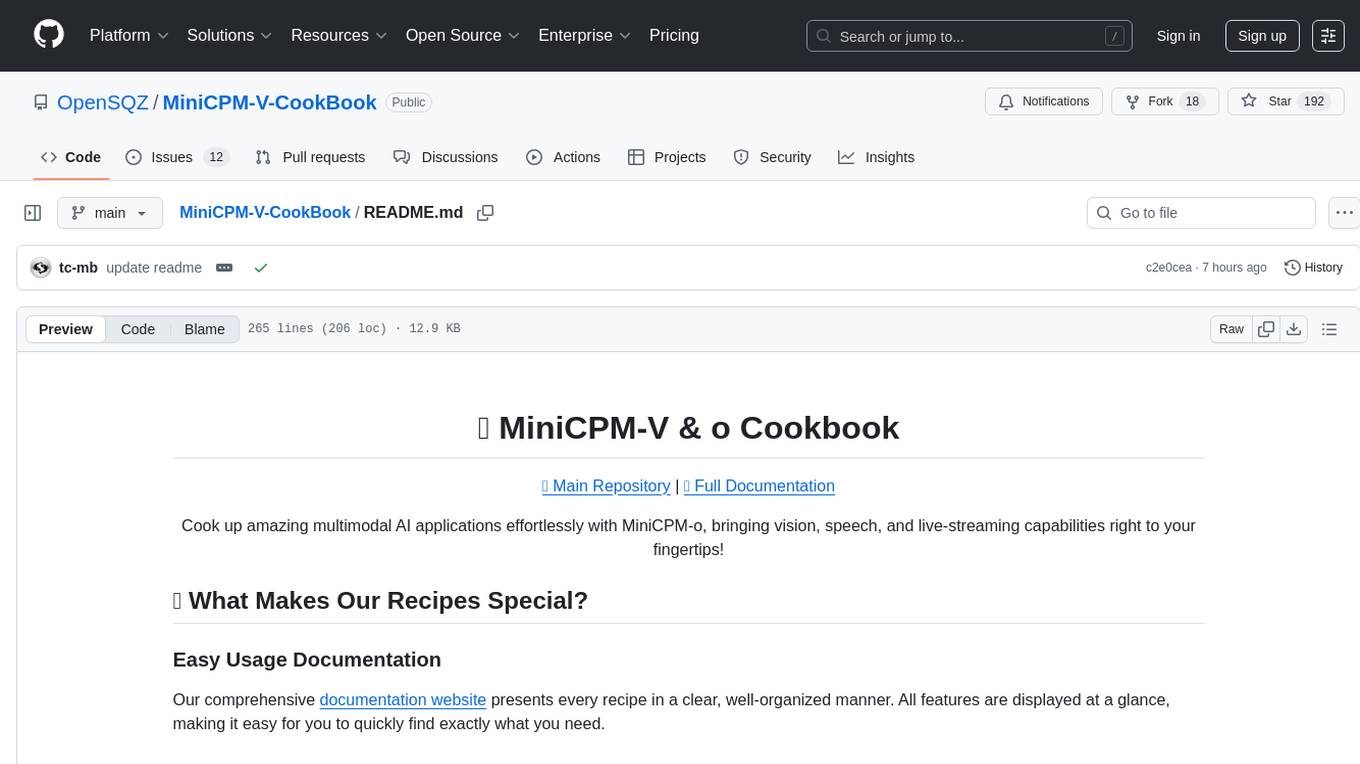
MiniCPM-V-CookBook
MiniCPM-V & o Cookbook is a comprehensive repository for building multimodal AI applications effortlessly. It provides easy-to-use documentation, supports a wide range of users, and offers versatile deployment scenarios. The repository includes live demonstrations, inference recipes for vision and audio capabilities, fine-tuning recipes, serving recipes, quantization recipes, and a framework support matrix. Users can customize models, deploy them efficiently, and compress models to improve efficiency. The repository also showcases awesome works using MiniCPM-V & o and encourages community contributions.
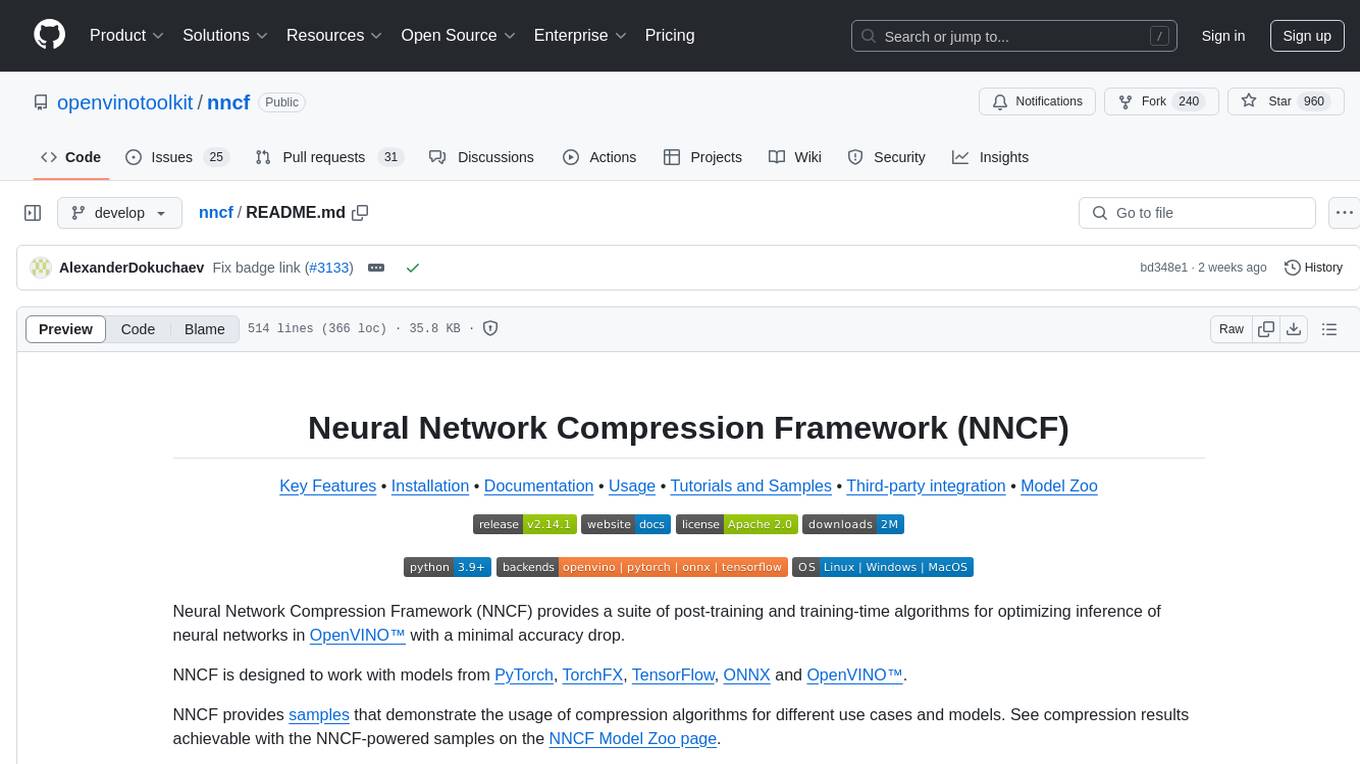
nncf
Neural Network Compression Framework (NNCF) provides a suite of post-training and training-time algorithms for optimizing inference of neural networks in OpenVINO™ with a minimal accuracy drop. It is designed to work with models from PyTorch, TorchFX, TensorFlow, ONNX, and OpenVINO™. NNCF offers samples demonstrating compression algorithms for various use cases and models, with the ability to add different compression algorithms easily. It supports GPU-accelerated layers, distributed training, and seamless combination of pruning, sparsity, and quantization algorithms. NNCF allows exporting compressed models to ONNX or TensorFlow formats for use with OpenVINO™ toolkit, and supports Accuracy-Aware model training pipelines via Adaptive Compression Level Training and Early Exit Training.
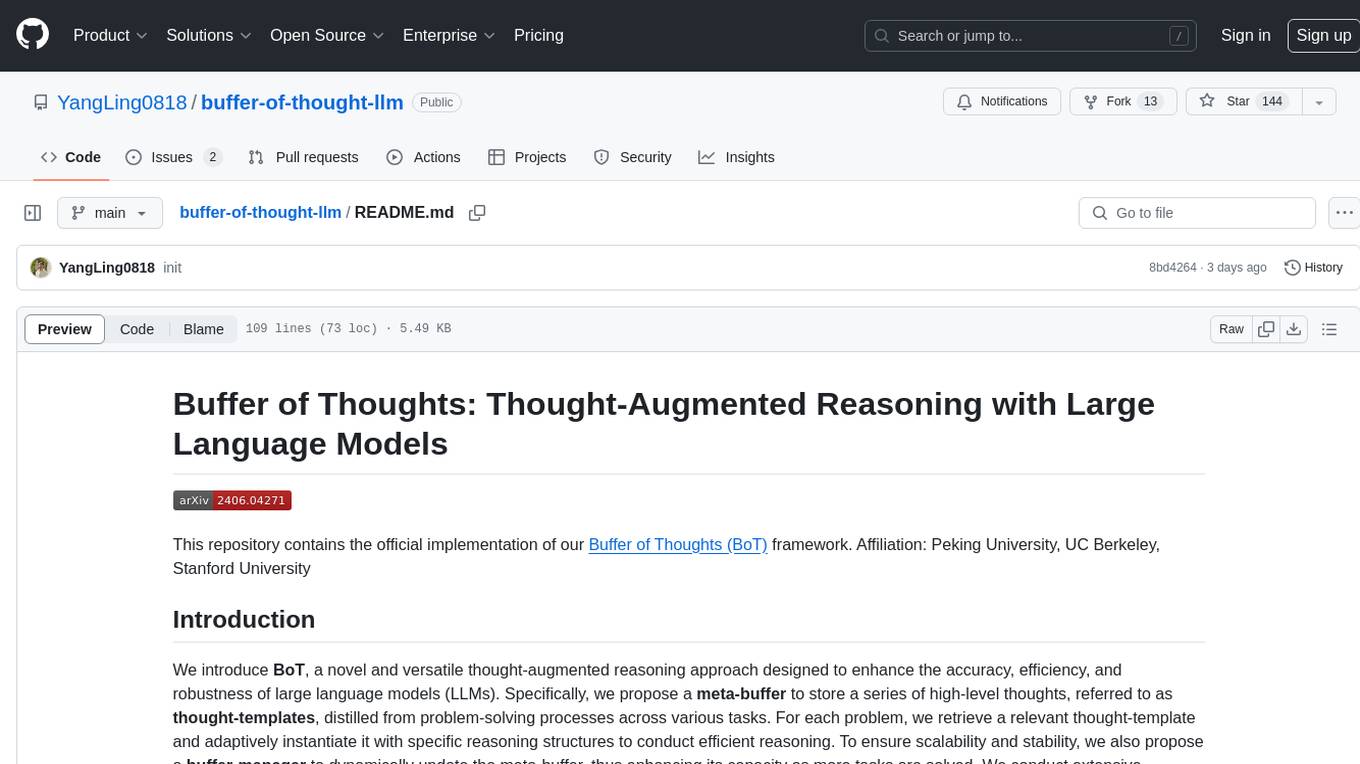
buffer-of-thought-llm
Buffer of Thoughts (BoT) is a thought-augmented reasoning framework designed to enhance the accuracy, efficiency, and robustness of large language models (LLMs). It introduces a meta-buffer to store high-level thought-templates distilled from problem-solving processes, enabling adaptive reasoning for efficient problem-solving. The framework includes a buffer-manager to dynamically update the meta-buffer, ensuring scalability and stability. BoT achieves significant performance improvements on reasoning-intensive tasks and demonstrates superior generalization ability and robustness while being cost-effective compared to other methods.
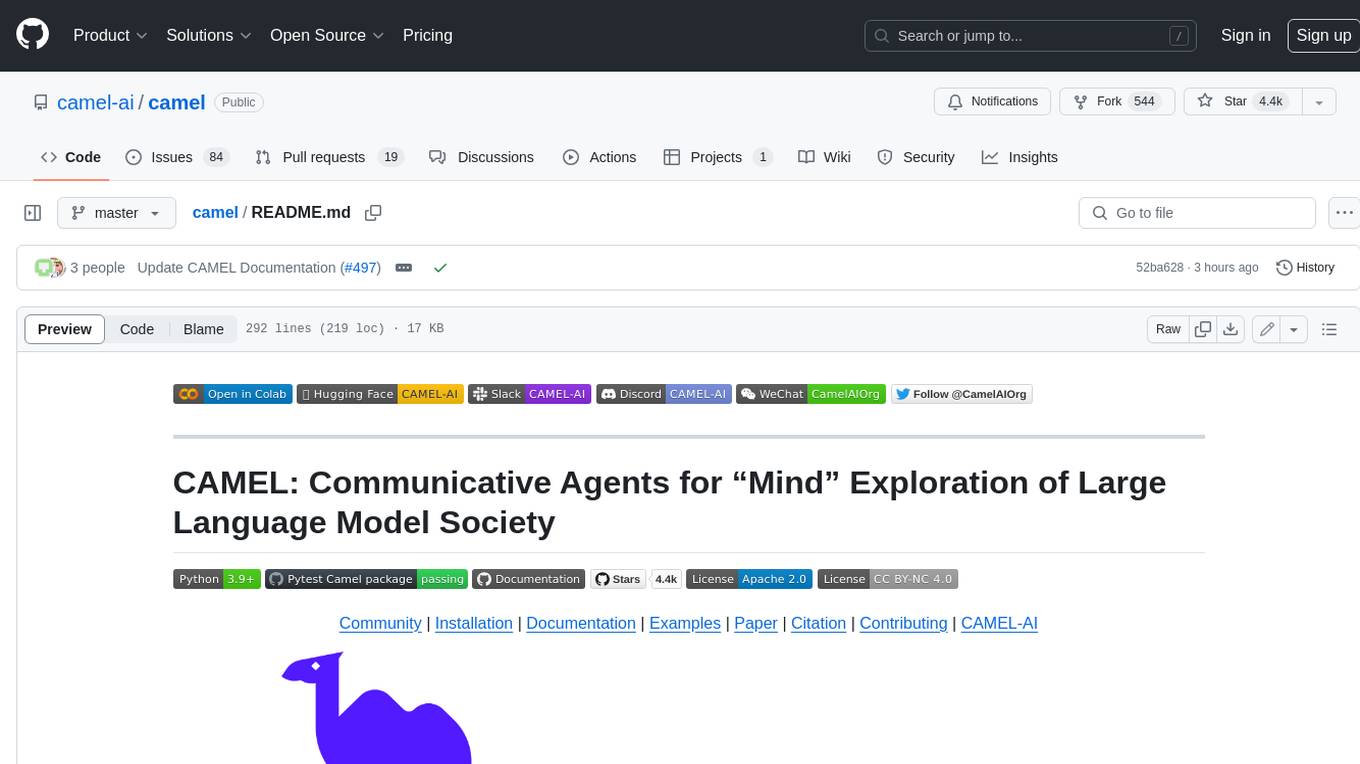
camel
CAMEL is an open-source library designed for the study of autonomous and communicative agents. We believe that studying these agents on a large scale offers valuable insights into their behaviors, capabilities, and potential risks. To facilitate research in this field, we implement and support various types of agents, tasks, prompts, models, and simulated environments.
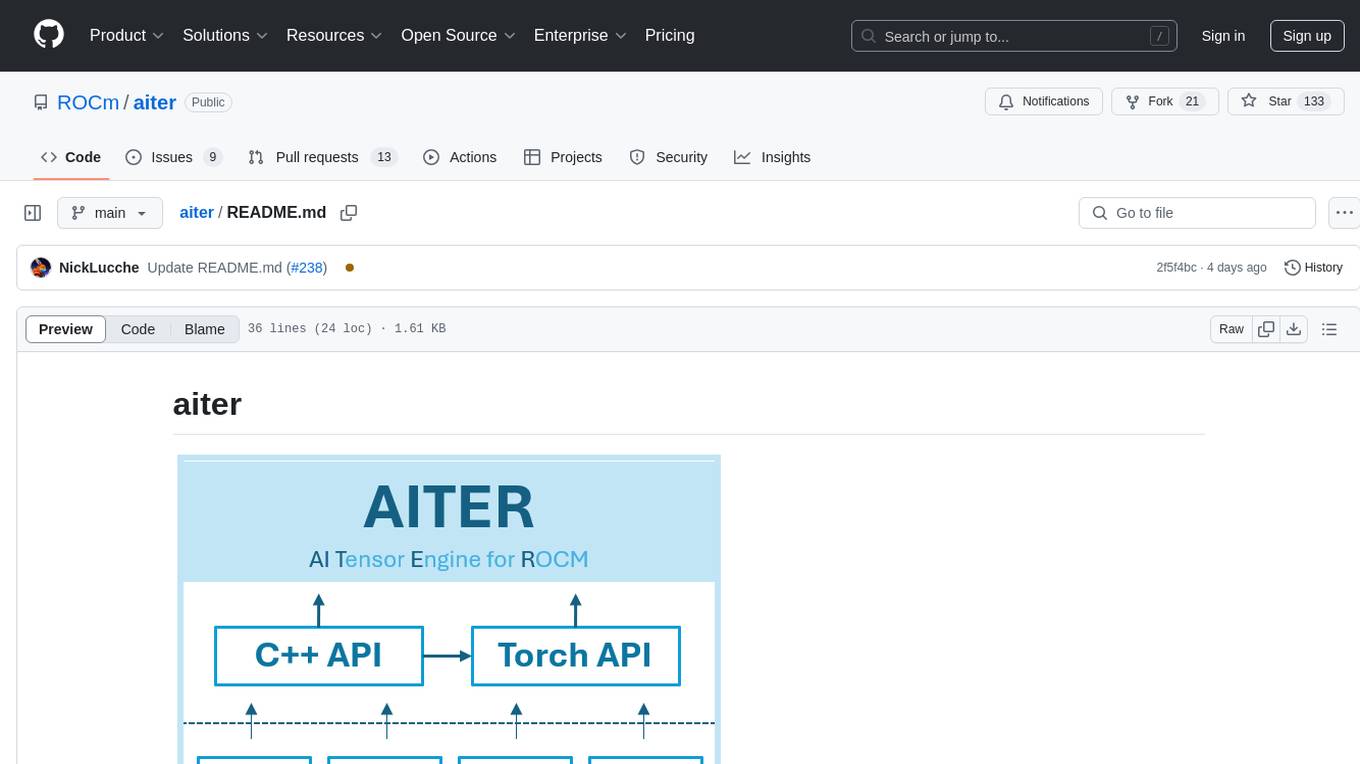
aiter
AITER is AMD’s centralized repository that supports various high performance AI operators for AI workloads acceleration. It serves as a unified platform for customer operator-level requests, catering to different customer needs. Developers can focus on operators and customers can integrate this collection into their own frameworks. Features include C++ and Python level APIs, kernels from triton/ck/asm, support for inference, training, GEMM, and communication kernels for workarounds in any kernel-framework combination for any architecture limitation.
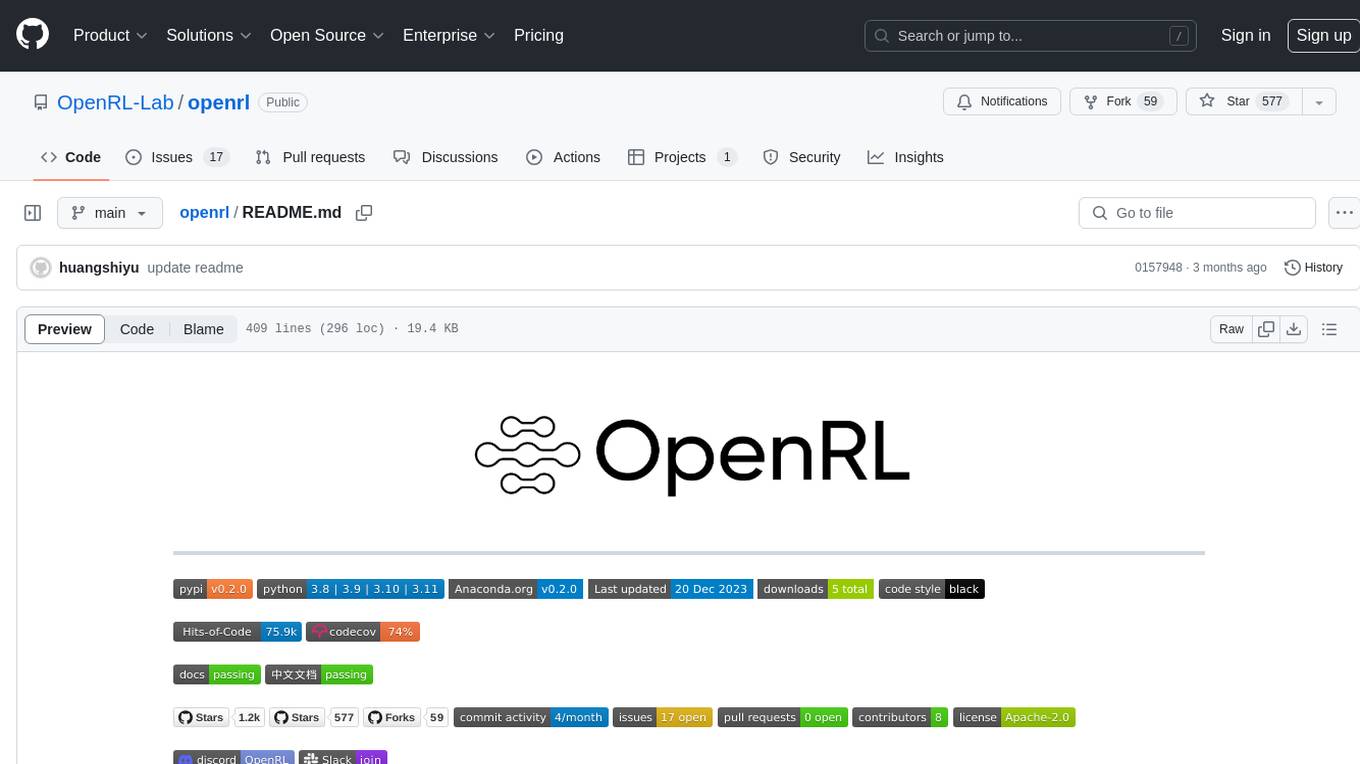
openrl
OpenRL is an open-source general reinforcement learning research framework that supports training for various tasks such as single-agent, multi-agent, offline RL, self-play, and natural language. Developed based on PyTorch, the goal of OpenRL is to provide a simple-to-use, flexible, efficient and sustainable platform for the reinforcement learning research community. It supports a universal interface for all tasks/environments, single-agent and multi-agent tasks, offline RL training with expert dataset, self-play training, reinforcement learning training for natural language tasks, DeepSpeed, Arena for evaluation, importing models and datasets from Hugging Face, user-defined environments, models, and datasets, gymnasium environments, callbacks, visualization tools, unit testing, and code coverage testing. It also supports various algorithms like PPO, DQN, SAC, and environments like Gymnasium, MuJoCo, Atari, and more.
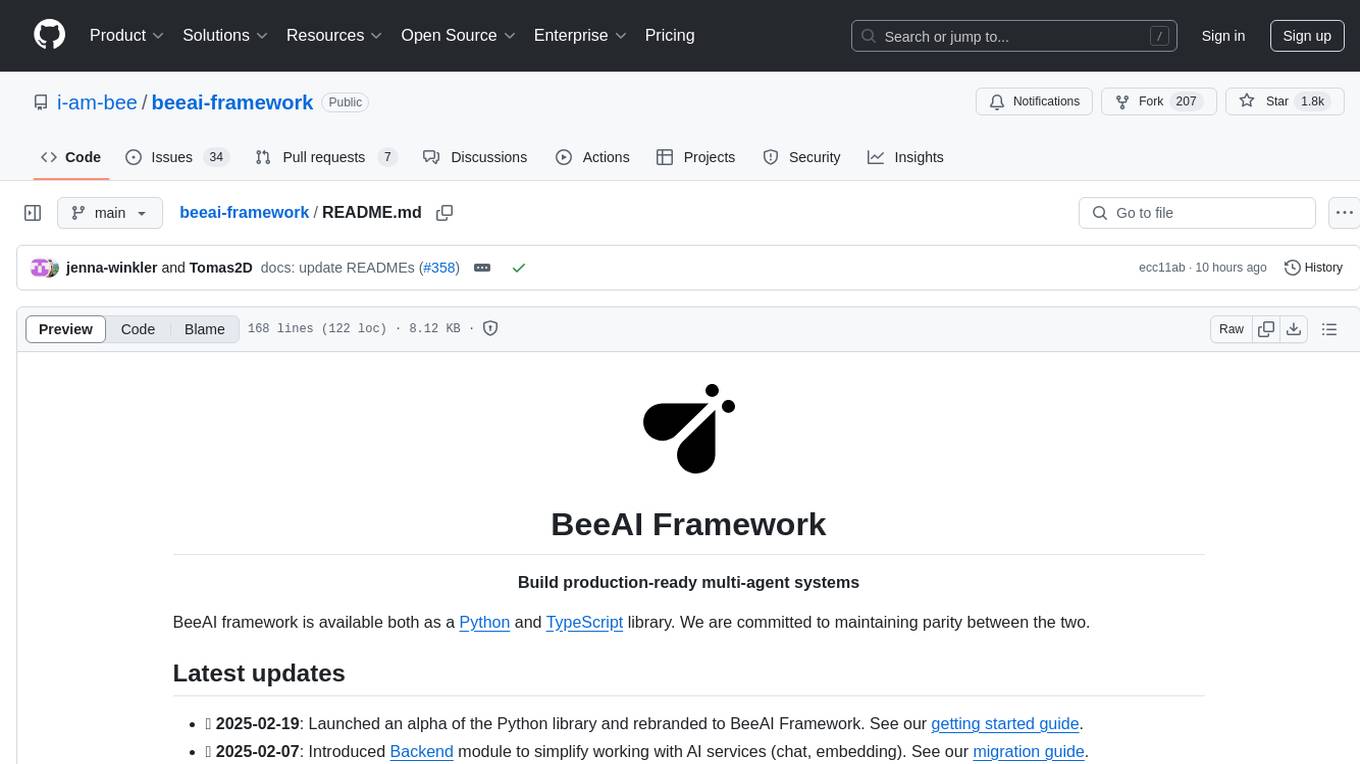
beeai-framework
BeeAI Framework is a versatile tool for building production-ready multi-agent systems. It offers flexibility in orchestrating agents, seamless integration with various models and tools, and production-grade controls for scaling. The framework supports Python and TypeScript libraries, enabling users to implement simple to complex multi-agent patterns, connect with AI services, and optimize token usage and resource management.
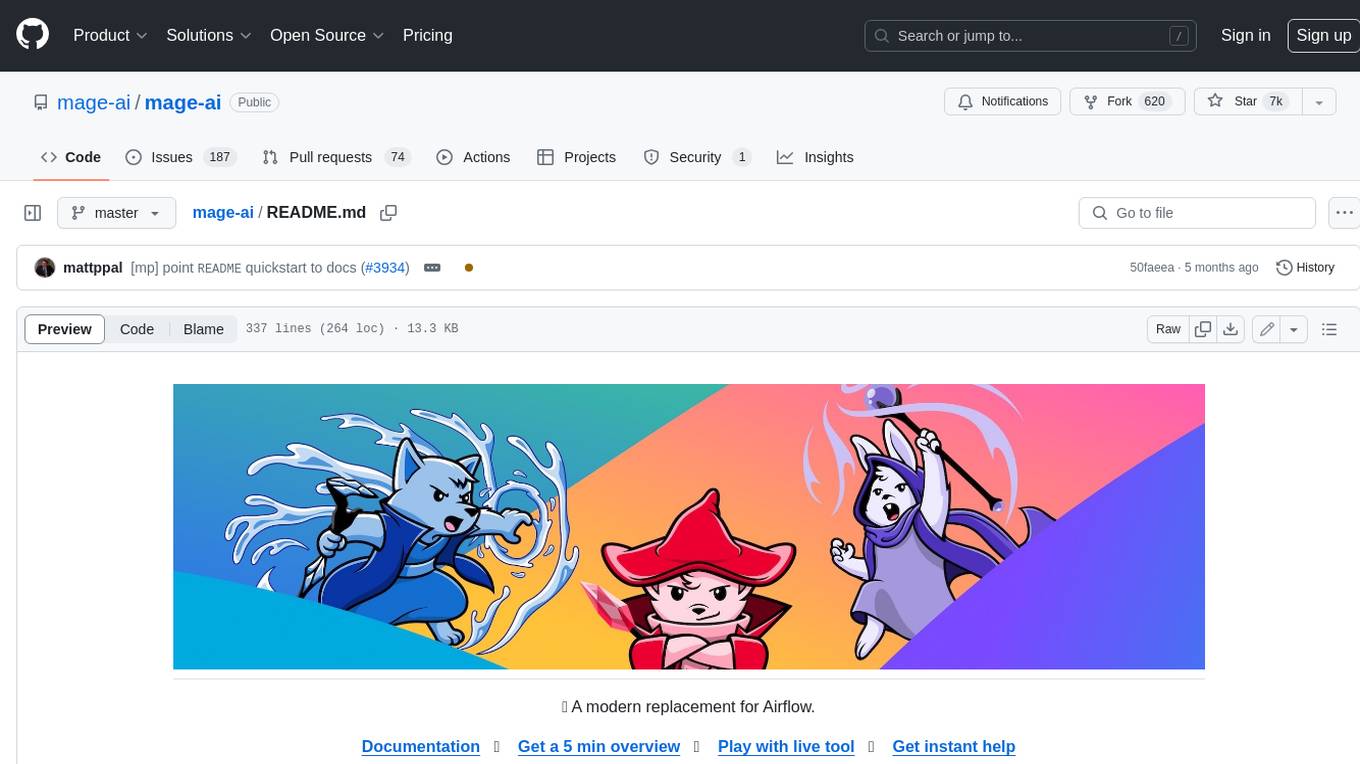
mage-ai
Mage is an open-source data pipeline tool for transforming and integrating data. It offers an easy developer experience, engineering best practices built-in, and data as a first-class citizen. Mage makes it easy to build, preview, and launch data pipelines, and provides observability and scaling capabilities. It supports data integrations, streaming pipelines, and dbt integration.
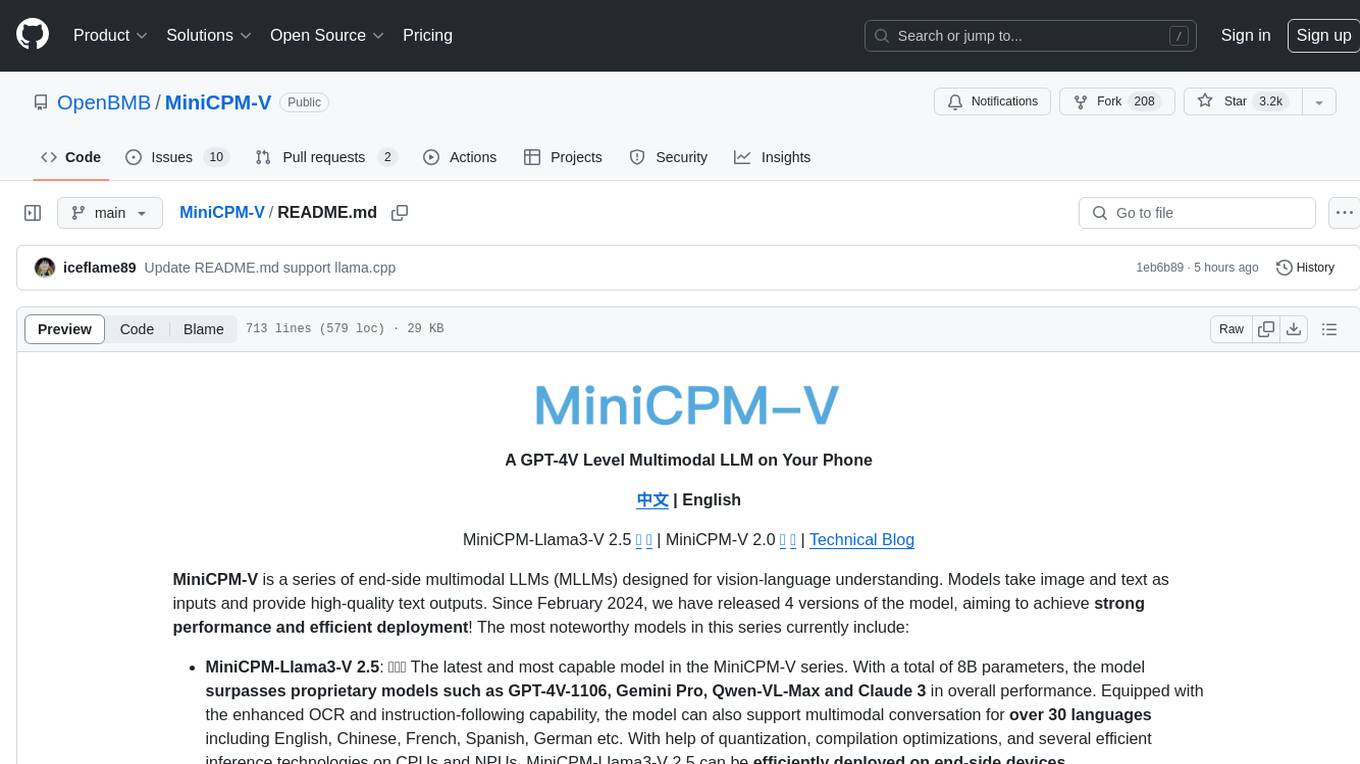
MiniCPM-V
MiniCPM-V is a series of end-side multimodal LLMs designed for vision-language understanding. The models take image and text inputs to provide high-quality text outputs. The series includes models like MiniCPM-Llama3-V 2.5 with 8B parameters surpassing proprietary models, and MiniCPM-V 2.0, a lighter model with 2B parameters. The models support over 30 languages, efficient deployment on end-side devices, and have strong OCR capabilities. They achieve state-of-the-art performance on various benchmarks and prevent hallucinations in text generation. The models can process high-resolution images efficiently and support multilingual capabilities.
For similar tasks

SimAI
SimAI is the industry's first full-stack, high-precision simulator for AI large-scale training. It provides detailed modeling and simulation of the entire LLM training process, encompassing framework, collective communication, network layers, and more. This comprehensive approach offers end-to-end performance data, enabling researchers to analyze training process details, evaluate time consumption of AI tasks under specific conditions, and assess performance gains from various algorithmic optimizations.
For similar jobs

sweep
Sweep is an AI junior developer that turns bugs and feature requests into code changes. It automatically handles developer experience improvements like adding type hints and improving test coverage.

teams-ai
The Teams AI Library is a software development kit (SDK) that helps developers create bots that can interact with Teams and Microsoft 365 applications. It is built on top of the Bot Framework SDK and simplifies the process of developing bots that interact with Teams' artificial intelligence capabilities. The SDK is available for JavaScript/TypeScript, .NET, and Python.

ai-guide
This guide is dedicated to Large Language Models (LLMs) that you can run on your home computer. It assumes your PC is a lower-end, non-gaming setup.

classifai
Supercharge WordPress Content Workflows and Engagement with Artificial Intelligence. Tap into leading cloud-based services like OpenAI, Microsoft Azure AI, Google Gemini and IBM Watson to augment your WordPress-powered websites. Publish content faster while improving SEO performance and increasing audience engagement. ClassifAI integrates Artificial Intelligence and Machine Learning technologies to lighten your workload and eliminate tedious tasks, giving you more time to create original content that matters.

chatbot-ui
Chatbot UI is an open-source AI chat app that allows users to create and deploy their own AI chatbots. It is easy to use and can be customized to fit any need. Chatbot UI is perfect for businesses, developers, and anyone who wants to create a chatbot.

BricksLLM
BricksLLM is a cloud native AI gateway written in Go. Currently, it provides native support for OpenAI, Anthropic, Azure OpenAI and vLLM. BricksLLM aims to provide enterprise level infrastructure that can power any LLM production use cases. Here are some use cases for BricksLLM: * Set LLM usage limits for users on different pricing tiers * Track LLM usage on a per user and per organization basis * Block or redact requests containing PIIs * Improve LLM reliability with failovers, retries and caching * Distribute API keys with rate limits and cost limits for internal development/production use cases * Distribute API keys with rate limits and cost limits for students

uAgents
uAgents is a Python library developed by Fetch.ai that allows for the creation of autonomous AI agents. These agents can perform various tasks on a schedule or take action on various events. uAgents are easy to create and manage, and they are connected to a fast-growing network of other uAgents. They are also secure, with cryptographically secured messages and wallets.

griptape
Griptape is a modular Python framework for building AI-powered applications that securely connect to your enterprise data and APIs. It offers developers the ability to maintain control and flexibility at every step. Griptape's core components include Structures (Agents, Pipelines, and Workflows), Tasks, Tools, Memory (Conversation Memory, Task Memory, and Meta Memory), Drivers (Prompt and Embedding Drivers, Vector Store Drivers, Image Generation Drivers, Image Query Drivers, SQL Drivers, Web Scraper Drivers, and Conversation Memory Drivers), Engines (Query Engines, Extraction Engines, Summary Engines, Image Generation Engines, and Image Query Engines), and additional components (Rulesets, Loaders, Artifacts, Chunkers, and Tokenizers). Griptape enables developers to create AI-powered applications with ease and efficiency.

